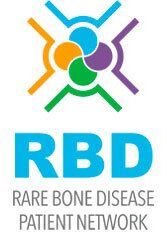
Adolescence marks the transition from childhood to adulthood, a process defined by gradual, multifaceted changes in behavior, development, and relationships rather than a distinct event or boundary. This guide addresses practical strategies for parents supporting teenagers with a Complex Lymphatic Anomaly.
Understanding Adolescence: Adolescence is a pivotal period of psychological breakthrough, shaping a young person's thoughts, emotions, and identity. It involves rapid physical development, emotional shifts, and self-discovery. Teens grapple with questions about identity and the future, challenging norms and seeking independence, which may lead to conflicts with parents.
Appearance and Identity: Teens often intertwine appearance with identity, especially those with rare conditions facing amplified concerns about body image. Parents can encourage open communication, offer reassurance, and focus on positive aspects of their child's appearance. Challenging societal beauty standards and fostering diverse interests can boost confidence.
Helping Your Child Gain Independence: Adolescents strive for independence, prompting a shift in parent-child dynamics. Setting clear, consistent boundaries, involving teens in rule-making, and praising positive behavior are essential. Letting go is challenging but necessary for their development, even more so for those with rare conditions navigating self-doubt.
Talking about CLAs: Open communication about the rare condition is crucial. Parents should provide factual information, use the medical name, highlight similarities, and leverage patient organization websites. Discussing it confidently helps alleviate fears, instills self-confidence, and prepares teens for potential questions from others.
Managing Reactions from Others: Teaching teens to handle reactions positively is vital. Equipping them with honest information, practicing responses, and promoting assertiveness empower them to navigate social situations. Parents play a key role in modeling confident behavior, reassuring their child, and addressing rudeness sensitively.
Importance of Friends: Friendships become pivotal during adolescence, impacting identity and social dynamics. Teens with a CLAs may feel both connected and excluded. Encouraging involvement in clubs and fostering an open home environment brings a sense of belonging.
Boyfriends and Girlfriends: Emotional attachments and concerns about romantic relationships arise during adolescence. Teens, especially those with a CLA, may worry about acceptance. Parents should reinforce a positive outlook, address concerns, and assure their child that presenting themselves confidently plays a crucial role in relationship success.
In summary, adolescence is a complex journey marked by changes in identity, independence, and relationships. Parents of teens with a CLA can provide support through open communication, positive reinforcement, and encouragement for individuality.










